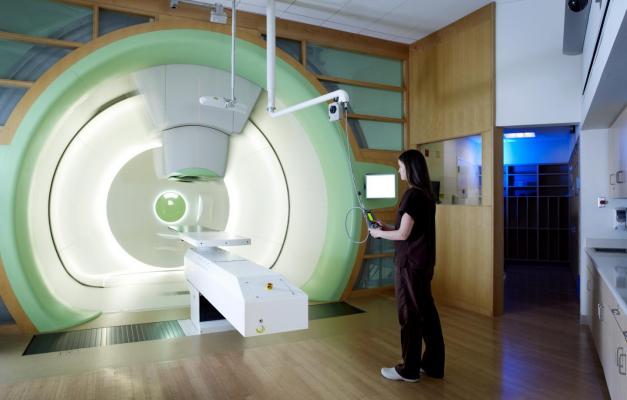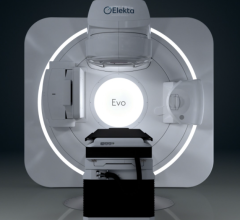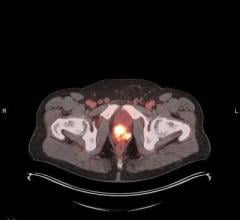
July 17, 2019 — Treating prostate cancer with higher doses of proton therapy over a shorter amount of time leads to similar outcomes when compared to standard dose levels and treatments and is safe for patients, according to a new study.
Researchers in the Perelman School of Medicine at the University of Pennsylvania and the Roberts Proton Therapy Center examined data on non-metastatic prostate cancer patients treated with 28 doses of proton therapy instead of the standard 44. They found that the rates of cancer control at four years was the same in both groups, with notably low rates of urologic and gastrointestinal effects from the treatment at four-year follow-up. The findings, which are the first to show patient-reported outcomes for shorter courses of proton therapy in prostate cancer, were published in the International Journal of Radiation Oncology, Biology, Physics.1
The shorter course of radiation is called hypofractionation, and previous studies have shown it can be effective with traditional photon radiation, but proton therapy has a few key differences. Photon radiation typically uses multiple X-ray beams to attack a tumor target but unavoidably deposits radiation in the normal tissues beyond the target, potentially damaging those tissues as the beam exits the body. Proton therapy is a U.S. Food and Drug Administration (FDA)-approved treatment that is an alternative radiation treatment. It directs positively charged protons at the tumor target, where they deposit the bulk of the radiation dose, with minimal residual radiation delivered beyond the target, potentially reducing side effects and damage to surrounding tissue. Due to these differences, researchers point out the need for better understanding of patient outcomes for the hypofractionated approach in protons, specifically.
“Even though protons are a more targeted way to deliver radiation, we need to make sure we understand the long-term effects of giving patients a higher dose of radiation during each treatment, and our study shows it’s safe,” said the study’s lead author Amardeep Grewal, M.D., assistant chief resident in radiation oncology.
The study looked at data on 184 men who received hypofractionated proton therapy for prostate cancer that had not spread. At a follow up of 49 months, 96 percent (N = 179) were still alive, with none of the patient deaths related to treatment. The cumulative four-year rate of serious gastrointestinal problems was estimated at 13.6 percent, almost all of which occurred in the first two years. Of the patients who had GI effects, 79 percent experienced rectal bleeding. The cumulative four-year rate of urologic issue was 7.6 percent. The most common issue was needing to urinate frequently. All issued resolved within six months.
“This study provides some prospective evidence that the higher daily radiation dose delivered in hypofractionated proton therapy does not negatively impact patient quality of life,” said senior author Neha Vapiwala, M.D., an associate professor of radiation oncology. “These data can help guide clinicians and patients as they weigh treatment efficacy, tolerability and convenience.”
The authors say more research is needed to evaluate the differences between hypofractionated radiation with photon and proton radiation.
This study was supported by the Department of Defense and the Prostate Cancer Foundation.
For more information: www.redjournal.org
Reference
1. Grewal A.S., Schonewolf C., Min E.J., et al. Four-Year Outcomes From a Prospective Phase II Clinical Trial of Moderately Hypofractionated Proton Therapy for Localized Prostate Cancer. International Journal of Radiation Oncology, Biology, Physics, June 11, 2019. https://doi.org/10.1016/j.ijrobp.2019.05.069


 May 17, 2024
May 17, 2024 








